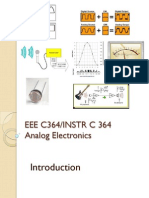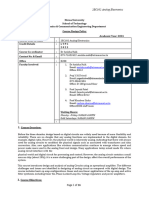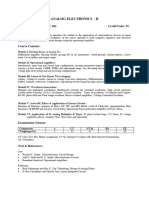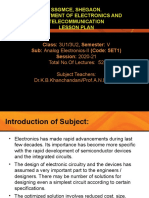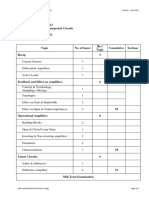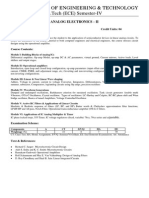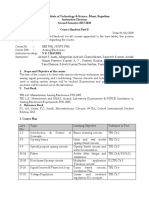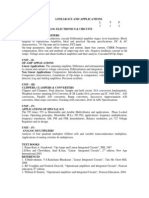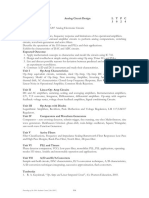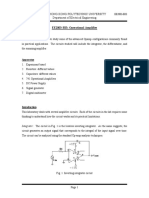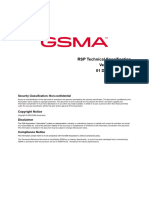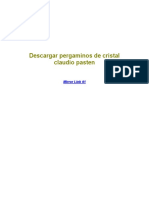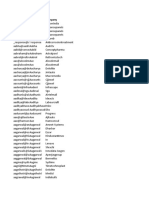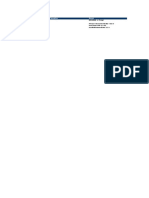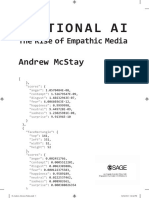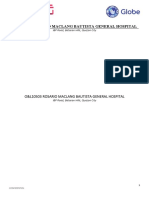0% found this document useful (0 votes)
38 views27 pagesAnalog Electronics Lecture-1+2
The document outlines the course structure for Analog Electronics (ECE/EEE/INSTR F341), detailing lecture, tutorial, and lab hours, along with the course objectives and topics covered. Students will learn about operational amplifiers, filters, voltage regulators, and data converters, with practical experiments using PSPICE for circuit analysis. The evaluation scheme includes mid-sem exams, quizzes, laboratory experiments, and a comprehensive exam, with specific policies for make-up exams.
Uploaded by
f20212810Copyright
© © All Rights Reserved
We take content rights seriously. If you suspect this is your content, claim it here.
Available Formats
Download as PDF, TXT or read online on Scribd
0% found this document useful (0 votes)
38 views27 pagesAnalog Electronics Lecture-1+2
The document outlines the course structure for Analog Electronics (ECE/EEE/INSTR F341), detailing lecture, tutorial, and lab hours, along with the course objectives and topics covered. Students will learn about operational amplifiers, filters, voltage regulators, and data converters, with practical experiments using PSPICE for circuit analysis. The evaluation scheme includes mid-sem exams, quizzes, laboratory experiments, and a comprehensive exam, with specific policies for make-up exams.
Uploaded by
f20212810Copyright
© © All Rights Reserved
We take content rights seriously. If you suspect this is your content, claim it here.
Available Formats
Download as PDF, TXT or read online on Scribd
/ 27

